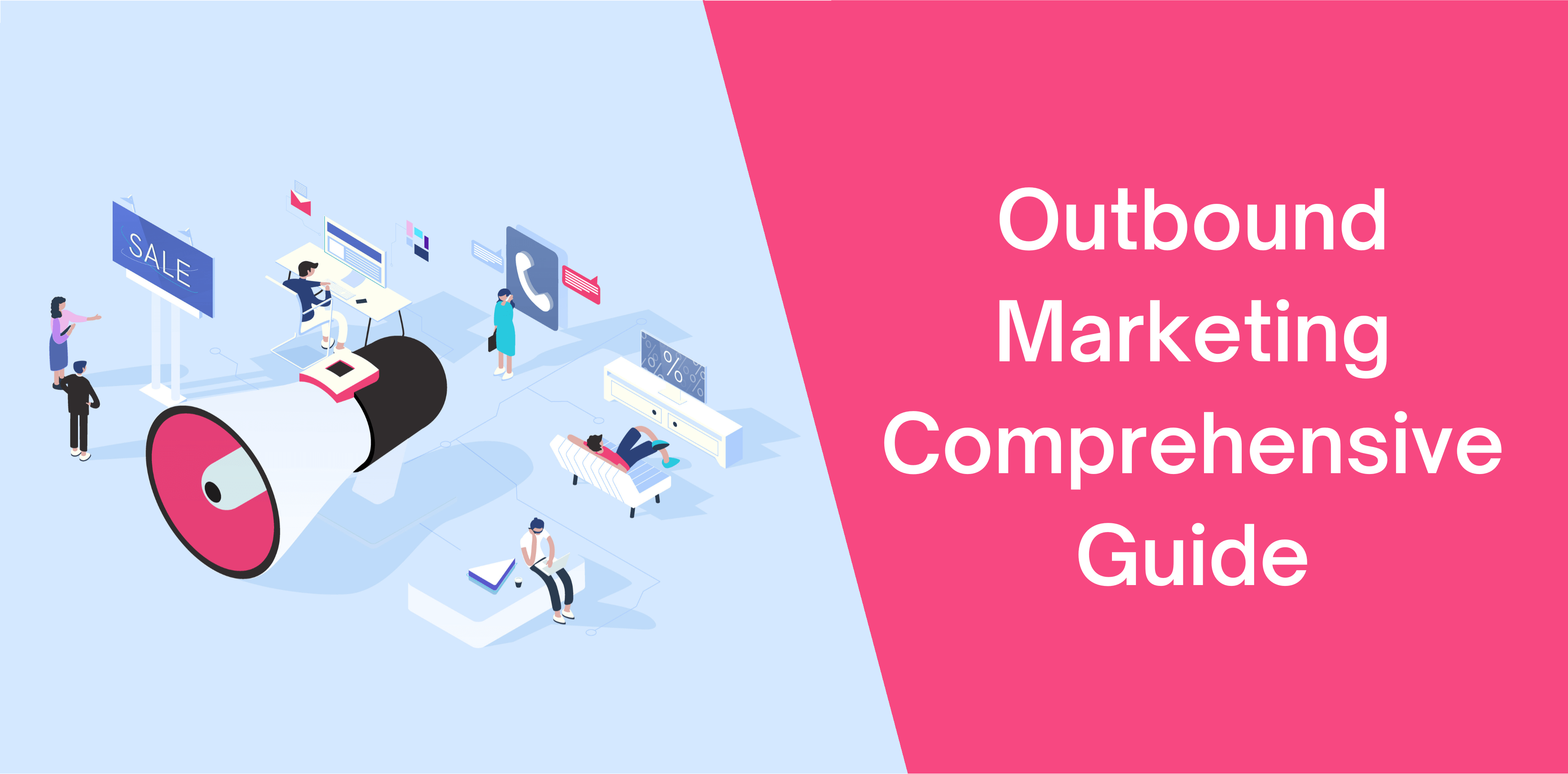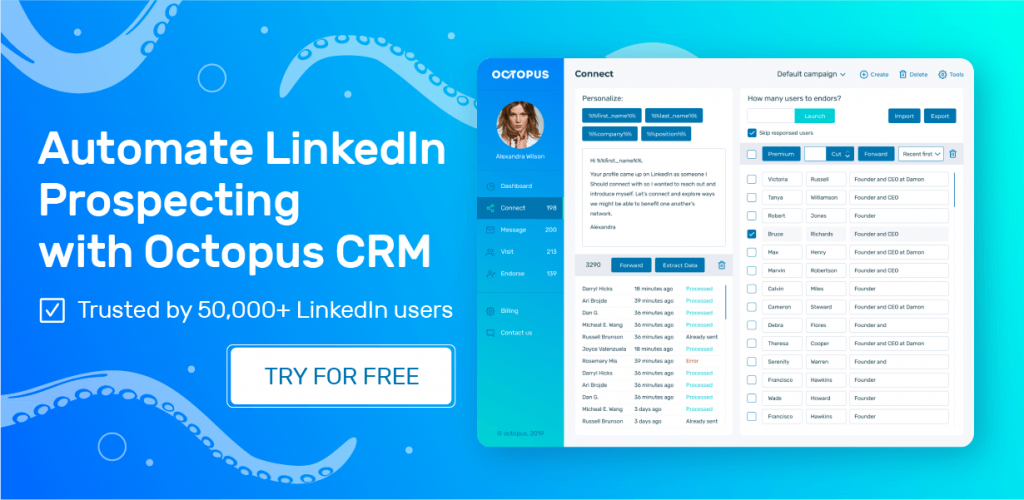Outbound marketing often gets a bad rep for being a low-level effort focused on generating a sales pipeline. Additionally, it has people incorrectly view it as an easy-to-execute initiative.
If your company isn’t embracing the art of outbound marketing, it’s time to get started! To help you out, we’ve created a comprehensive guide below.
What Is Outbound Marketing?

Outbound marketing is an umbrella term for marketing and advertising techniques where a company initiates a conversation with its audience. Therefore, marketers push their products/services on potential customers instead of stimulating their interest.
Several everyday outbound marketing activities include the following:
- TV and radio ads;
- Digital ads, such as magazines or social media;
- Outbound sales call aka cold calls;
- Print media like flyers and brochures;
- Billboards and outdoor posters.
Top Outbound Marketing Channels
Different businesses use different outbound marketing strategies to promote their business, such as:
Cold Call
Cold calls are a popular sales and outbound marketing technique to grow brand awareness and acquire qualified leads. Retail companies utilize this technique to attract prospects and scale their sales. In fact, 42.1% of marketers reveal that the phone is among the most robust sales tools.
Moreover, cold calling is undoubtedly an effective way of creating buzz about your brand and selling products. Not to mention, 82% of buyers accept meetings with a salesperson who reaches out.
Direct Mail
Direct Mail Marketing is the ideal way of connecting with prospects who haven’t responded on any other channel. In particular, if your target audience is 55+, direct mail can be a handy tool to reach out to them.
According to research, 85.5% of respondents aged 65+ use emails. Furthermore, people between 55 and 65 are most likely to read marketing emails and newsletters.
Brochures and Flyers
Flyers and brochures are a traditional and seemingly forgotten outbound marketing technique. But it’s still very effective.
Research by the DMA shows that 60.5% of people read flyers that come through their letterboxes. Moreover, 78% of buyers glance at pamphlets and brochures and 23% read them thoroughly.
While standing near your store or railway station is a viable way of distributing brochures and flyers, we recommend doing so at a business-related conference or event.
PPC Advertising

PPC Advertising or pay-per-click is another fantastic outbound marketing strategy that helps marketers grow brand awareness and attract prospects by running ads.
In PPC, you rank your product/service at the top search engine results for specific keywords. This marketing strategy stands out because it offers a whopping 200% ROI and generates 2x the number of visitors as SEO.
Video Ads
Statista states over 3 billion internet users watch, stream, or download a video at least once per month. As the number increases, it’s no surprise that video ads are an engaging and effective way of attracting customers.
Moreover, using YouTube can help you focus on your target market by determining the kind of videos your ad appears in. Consequently, 78% of surveyed marketers reveal that videos have helped increase sales, and 86% said video ads helped boost web traffic.
What Are the Challenges in Outbound Marketing?
Businesses will encounter various obstacles as they create outbound marketing strategies and segments. Here are the seven challenges every marketer faces:
Challenging to Track the Return on Investment
The downside of outbound marketing is that the average cost per lead is often high. Thus, salespeople find it almost impossible to keep track of the ROI.
The primary objective of outbound marketing is to spread the word about your brand and product/service. As a result, marketers tend only to quantify the number of people reached and not how many took action.
One-Way Communication System
Here’s the thing: outbound marketing is all about targeting your prospects with promotional materials. That means marketers can’t find the opportunity to engage with their target audience.
By conducting surveys, you can only identify how your potential customers respond to your campaign. The cons? Organizing surveys costs time and money.
High Cost, Low Yield
Having a budget for outbound marketing can be challenging for small businesses and start-ups, especially on the type and size of advertising.
Online ads are typically cheaper than offline methods, such as TV ads and billboards, but might take longer to provide results.
Lack of Resources
The benefit of outbound marketing is that it exposes you to innumerable potential customers quickly. However, your prospects might not know what your brand does and offers.
You’ll have to educate and guide them to convert them into revenue-generating customers. And if you’re a growing business with limited staff members, you might struggle to give every prospect the attention they require.
Not Having a Clear Goal

Outbound marketing poses the challenge of creating clear and measurable goals.
Moreover, not having specific, attainable, and relevant goals can make monitoring progress and adjustments challenging.
People Don’t Like Ads
Research shows that inbound marketing accounts for 90% of internet clicks, whereas outbound marketing makes up 10%. That means your buyers don’t want ads; they want to discover things.
Unfortunately, one significant challenge of outbound marketing is that prospects pay less attention to salesy advertisements. In fact, they’ll unsubscribe to email lists, block cold call numbers, and avoid websites if it has too many ads.
Finding Qualified Leads is Tricky
The fact is that finding qualified leads through outbound marketing is near impossible. Spotting your ideal prospect in a crowd of thousands is one of the most challenging aspects of outbound marketing.
Typically, consumers don’t want to commit to a product or service without researching and reading detailed information. It also requires more money to acquire a lead than inbound marketing.
The best you can do is use the data you have about your target audience to create a marketing campaign that converts.
Top 8 Outbound Marketing Strategies to Try
The challenges discussed above do not mean you shouldn’t use outbound marketing to promote your product or service.
Instead, combine this marketing strategy with your inbound techniques to grow sales and drive organic traffic. But how?
Here are eight effective outbound marketing strategies you can try to attract more customers:
Determine the “What,” “Who,” and “How” of Your Product/Service
Every product and service serves a purpose:
- It has a market – Which environment matches your product?
- It has a value – What specific problem does it solve?
- Your competitors will try to drive your traffic to their websites. But your product’s value and unique approach will help you dominate your competition and expand your customer base.
Once you identify what you’re, you must determine who your potential customer is. Here’s how you can spot your target audience:
- They have a pain point that your product solves.
Remember that decision-makers will analyze and evaluate your product before they spend money.
Lastly, consider how you’ll make your product or service stand out in front of your potential customer. For this, you need to:
- Identify which channel your target audience is most active in and connect with the decision-makers;
- Create a compelling and informative message that addresses the customer’s pain points while elucidating your product’s value.
Learn More about Your Competitors
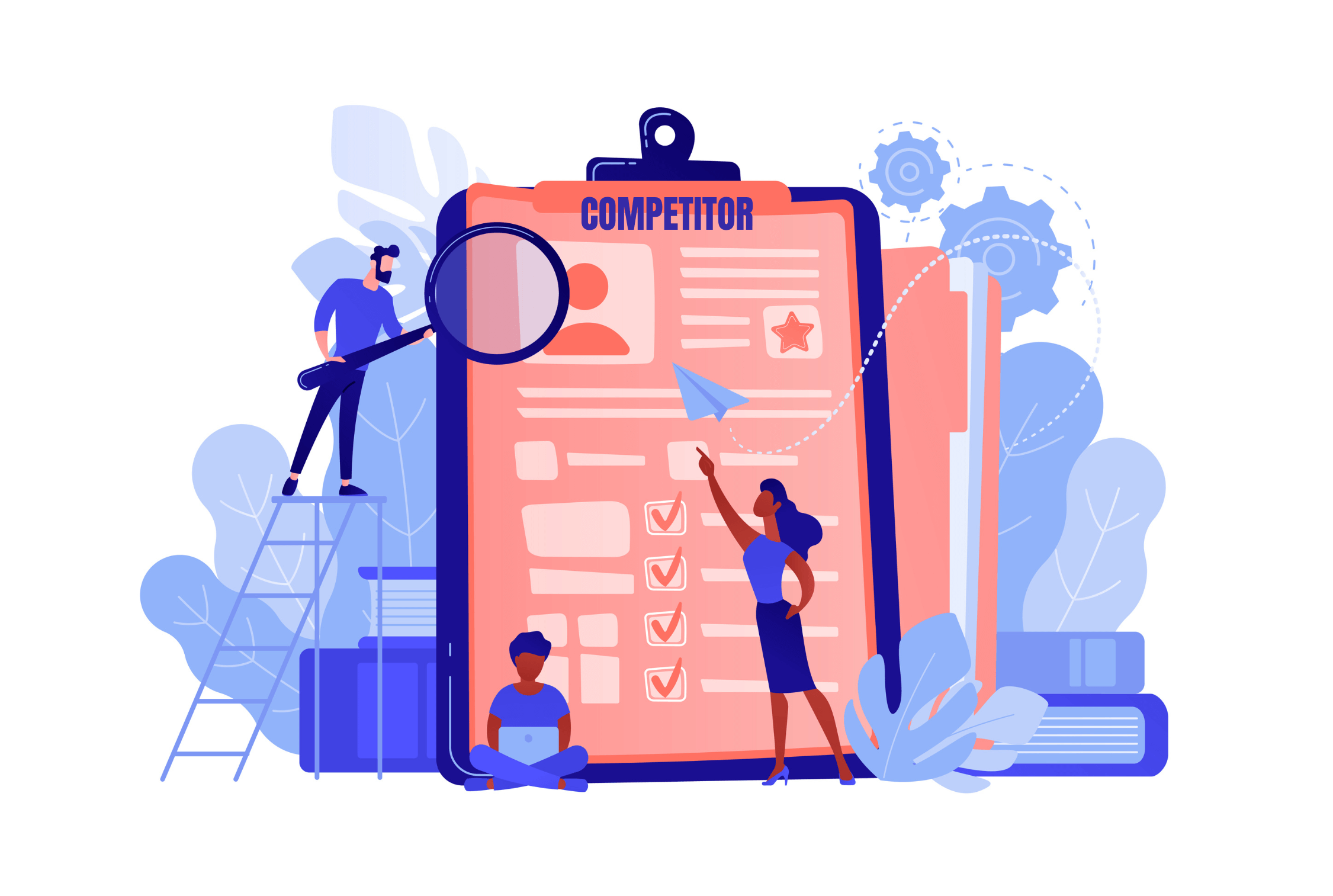
Outbound marketing includes a healthy amount of competition. To get noticed, you must overcome your competition and find a way to steal the spotlight.
Therefore, you must research your competitors and identify what they’re doing right and wrong. You can learn from their failures and find new ways to stand out.
Boost Successful Social Media Posts
Boosting social media is different from posting an advertisement. With ads, you get the opportunity to determine who receives it, leading it to appear with the words “Suggested Post.” Seeing an ad can turn off customers within seconds, thus driving them away from your website.
On the contrary, boosting a post allows you to extend your reach without making it look like an ad. “Boosting” puts your image or video in front of more people but doesn’t appear as a “Suggested Post.” Therefore, it helps attract your target audience more effectively.
The ideal time to boost a social media post is when it experiences increased engagement. Boosting that post can help increase shares and likes and boost your ROI.
Create Innovative Campaign Messaging
Start creating a killer campaign message by listing the key ideas you want to communicate.
Ideally, it should include your campaign name, slogan, headline, and hashtags. Consider using storytelling techniques to drive engagement
Furthermore, ensure you create compelling, practical, and relevant content. Analyzing your past strategies and metrics is an excellent way to produce highly relevant and enthralling copies.
Send Email Blasts with One-time Offers or Discounts
Contrary to popular belief, email blasts still work!
Email use is still prevalent, 92% of internet users admit to using emails as an effective way of communicating. So, with the correct email marketing strategies, you can automate emails and use them to grow your brand.
While you’re sending email blasts, try incorporating an enticing offer. The options are infinite, from one-time discounts for new customers to distributing free resources. Remember, everyone loves free stuff!
Hold Tradeshows and Other Industry Events
According to Statista, the U.S. trade show industry generates revenue of 6.5 billion! That means it’s evident trade shows aren’t going anywhere. So, why not sponsor one to showcase your best marketing materials, sales reps, and product experts?
As a result, you can acquire qualified leads and boost brand awareness, especially since 92% of people attend a trade show to learn about new products and services. Additionally, these events allow you to stand out from your competitors.
Aim to bring a lead sheet to note the info of prospects that show interest in your brand and product/service. Since 82% of attendees have buying authority, scanning the badge of an engaged audience can help you boost sales.
Make Cold Calls to Acquire Prospects
Cold calling is a proactive outreach marketing technique where a salesperson calls various potential clients to stimulate interest and convert them into revenue-generating customers.
Cold calls get a bad rep for always going unanswered, but that’s far from true! Research reveals that making a few call attempts can boost your conversion rate by a whopping 70%.
You can also improve brand awareness and trust with the right strategies and tools. But remember to state your reason for calling; it could help boost your success rate by over two times!
Leverage LinkedIn to Generate Leads

Not a fan of calling random people on the phone? No problem! LinkedIn allows salespeople to engage prospects and stir interest in their product or service through InMail.
Since LinkedIn is the 2nd most popular B2B marketing platform, it makes sense to use its expansive consumer base to grow brand awareness.
Furthermore, the LinkedIn Premium and Sponsored services allow you to send highly personalized messages to people you don’t share a first-degree connection. You can boost your sales by practicing LinkedIn SEO techniques!
5 Examples of Outbound Marketing
Now that we’ve discussed the top eight outbound marketing strategies, let’s dive into some examples:
Example # 1: Content Syndication
Content is king…but only if your target audience sees it. That’s where content syndication comes into the picture!
Content syndication includes paid efforts, such as selecting websites to host your content and non-paid ones, like writing a guest blog post or sharing your blog’s link on social media.
The bonus of using this technique is that content syndicators often require leads to fill out a form asking for personal information like email addresses, company, etc., to learn more about qualified leads.
Example # 2: Email Marketing
Email marketing campaigns entail a series of emails used to communicate with loyal and potential customers to keep them engaged.
64% of B2B marketers believe that their email marketing strategy is effective for hitting business goals. But to ensure your email doesn’t end up in the spam filter, you must create compelling emails that offer value.
Example # 3: Billboard Advertising
Billboards might seem old and outdated, but the fact is that it’s still a fantastic way of growing brand awareness. However, it requires a little more than creativity to captivate people.
Unlike other marketing techniques, billboard ads aren’t just competing against other brands; they’re also trying to overcome extreme challenges like fast drivers.
Therefore, to grab your target audience’s attention, your billboard ad must be creative, memorable, legible from a distance, and eye-catching. Luckily, 81% of travelers notice static and digital billboards, so it’s not impossible!
Example # 4: Inside Sales
Effective lead generation and conversion strategies require the collaboration of marketers and salespeople. To ensure your leads turn into profitable customers, you must know how to move marketing leads into the sales pipeline.
Inside sales handpick marketing-generated leads, qualify them, and then hand them over to an experienced salesperson to close the deal.
Benefits of Outbound Marketing
Let’s discuss some of the advantages of outbound marketing:
Easy to Implement
Unlike inbound marketing, outbound marketing strategies are typically easier to implement.
Depositing letters in mailboxes, posting social ads, and advertising in public hands is less time-consuming and more viable than content or email marketing.
Boosts Brand Awareness
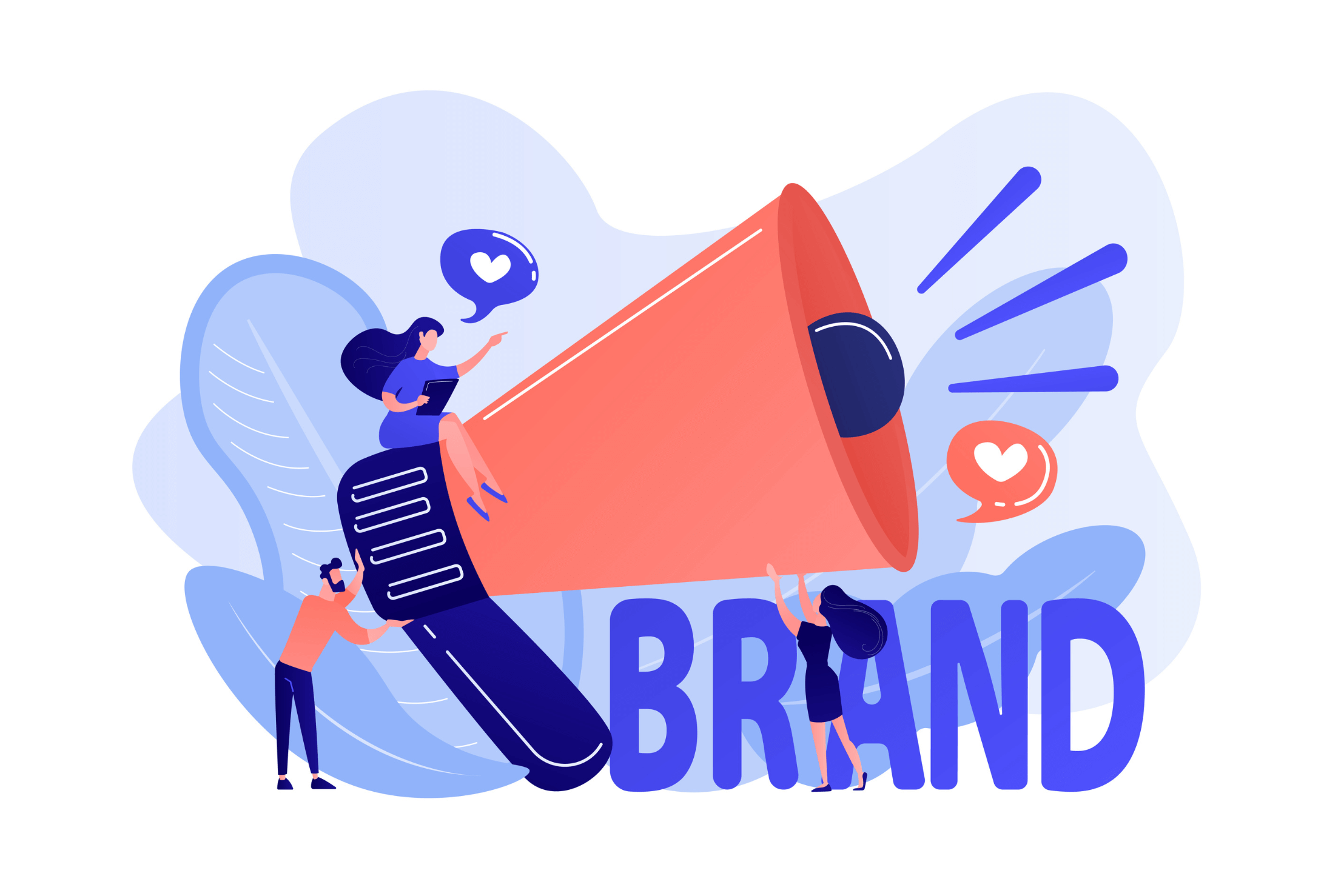
Another critical benefit of outbound marketing is that it helps boost your brand awareness. It also enables you to reach new people who might not know your brand and its products/services.
With Inbound marketing, your strategies and techniques focus on expanding your outreach and fostering an organic relationship with existing customers.
On the other hand, outbound marketing helps you connect with new prospects, thus allowing you to grow your consumer base.
Easy Targeting
Most small businesses focus on advertising in their local area, thus making outbound strategies much easier.
Unlike multi-national and large organizations whose target market is all around the country, you can benefit from purchasing a local radio spot or a billboard to connect with your target audience.
Immediate Results
Small businesses and start-ups have to generate revenue daily to stay afloat.
That’s why outbound marketing is a better option than inbound marketing, which requires two to three months to drive results.
Effortless and Efficient
Outbound marketing channels are generally easy to master, thus making them the perfect tool for small businesses and start-ups.
Furthermore, outbound marketing focuses on in-depth research, segmentation, and targeting- practices that can increase qualified leads significantly.
Visual Storytelling
Outbound marketing strategies like TV ads and billboards are ideal for brands that want to improve brand awareness and acquire qualified leads.
In fact, research by Moz and Fractl reveals that over 50% of respondents believe that traditional advertising is the best way to capture their attention.
Complements Inbound Marketing
Aligning your inbound marketing strategies with traditional advertising can boost your marketing efforts significantly.
For instance, if a viewer watches an attention-grabbing ad and clicks on your website, they’ll find connecting to your products or services easier. Additionally, they’ll feel more confident in making a purchase.
Inbound vs Outbound Marketing
There are several stark differences between outbound and inbound marketing. Keep reading to discover them:
A Quick Glance at Inbound Marketing
Inbound marketing focuses on attracting customers by piquing curiosity and engagement to drive traffic to your web pages or brand. It’s also known as “pull marketing” or “content marketing” since it helps draw customers in.
Inbound marketing leverages various marketing channels to engage customers by solving a problem or fulfilling a need. These include:
- Quizzes and Polls;
- Blogs;
- Video Content;
- Guidebooks;
- Other Online Marketing Content.
A Quick Glance at Outbound Marketing
Outbound marketing or interruption marketing is traditional and older of the two types. This strategy involves tactics to spread your message to many people to grow sales.
The different types of outbound marketing channels include:
- Banner and Display Ads;
- Billboards;
- Cold Email Marketing;
- Direct Mail;
- Pop-ups and Pop-unders;
- Radio Ads;
- Telemarketing;
- TV Commercials.
Since outbound marketing includes one-way conversations, the primary objective is to communicate why the audience should buy it.
Inbound vs Outbound Marketing
Let’s discuss the difference between inbound and outbound marketing in-depth:
Inbound Marketing |
Outbound Marketing |
| Captivates engaged viewers | Promotes products to a diverse audience |
| Puts the customer at the center | Puts the brand or product/service at the forefront |
| It makes it easy to track customer engagement | Poses challenges when tracking customer engagement |
| Online only | Online and Offline |
| It helps enhance the user experience | Disrupts the user experience |
| Interactive | One-way communication |
Benefits of Inbound vs Outbound Marketing
Outbound and inbound marketing have different perks, such as:
Inbound Marketing
- It’s non-invasive;
- Specifically designed to captivate and educate the audience;
- Quantifiable and easy to track;
- Massive potential reach;
- Ability to reach relevant audiences with specific messaging.
Outbound Marketing
- Improves brand awareness;
- Yields immediate results;
- Ideal for local audiences;
- Integral to a successful omnichannel marketing strategy;
- Appeals to segmented audiences.
Tools to Automate Your Outbound Marketing Strategy
Here’s something no one tells you: you can automate your prospecting and lead generation strategies.
That’s right; you can discover robust outbound marketing automation tools to grow brand awareness and increase sales.
Not sure which tool you should choose? Keep reading to find the top six outbound marketing platforms to automate your prospecting, lead generation, and conversion efforts:
Sales Loft 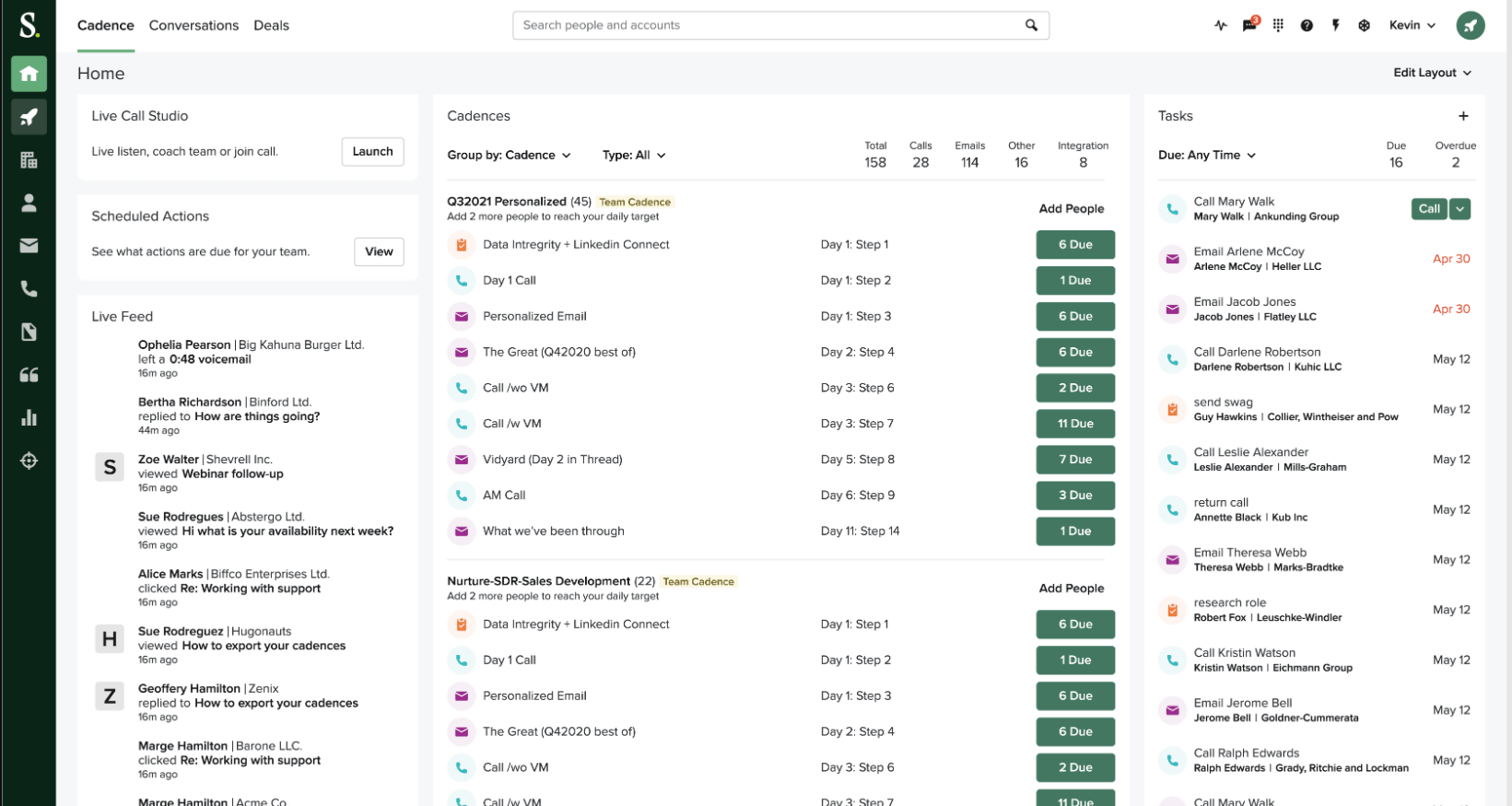
Sales Loft is a robust sales engagement platform used to increase appointments and qualified demos by a whopping 300%. The tool helps salespeople communicate with their target audience, execute digital selling tasks, and get the insights they need to win.
Furthermore, the platform allows you to A/B test emails, customize the messaging, and collaborate with third-party tools.
Cadence
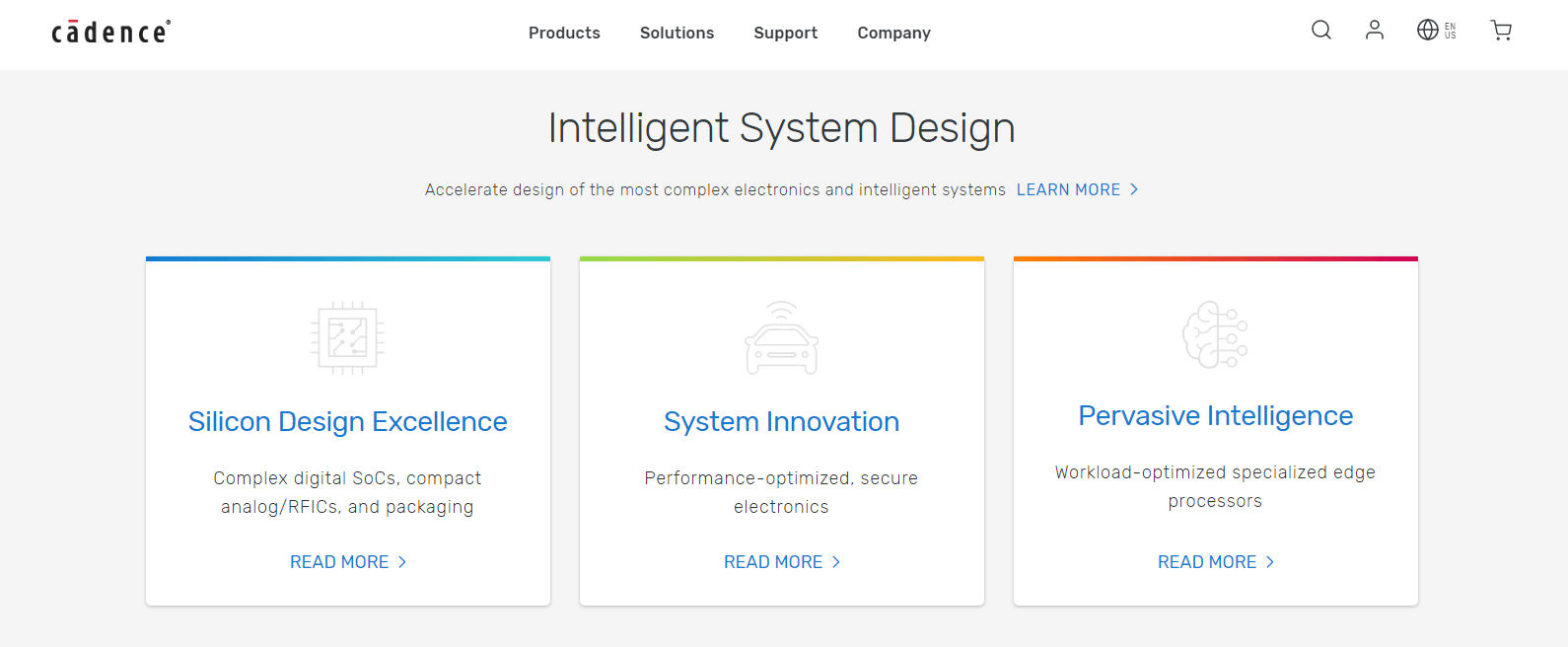
Cadence enables you to design your process for outbound marketing, such as emails, development phone calls, and more.
The tool’s easy-to-program and propagate features make it easy to track emails and create phone lists. Moreover, they have well-curated and eye-catching templates for scheduling productivity and improving workplace performance.
Octopus CRM
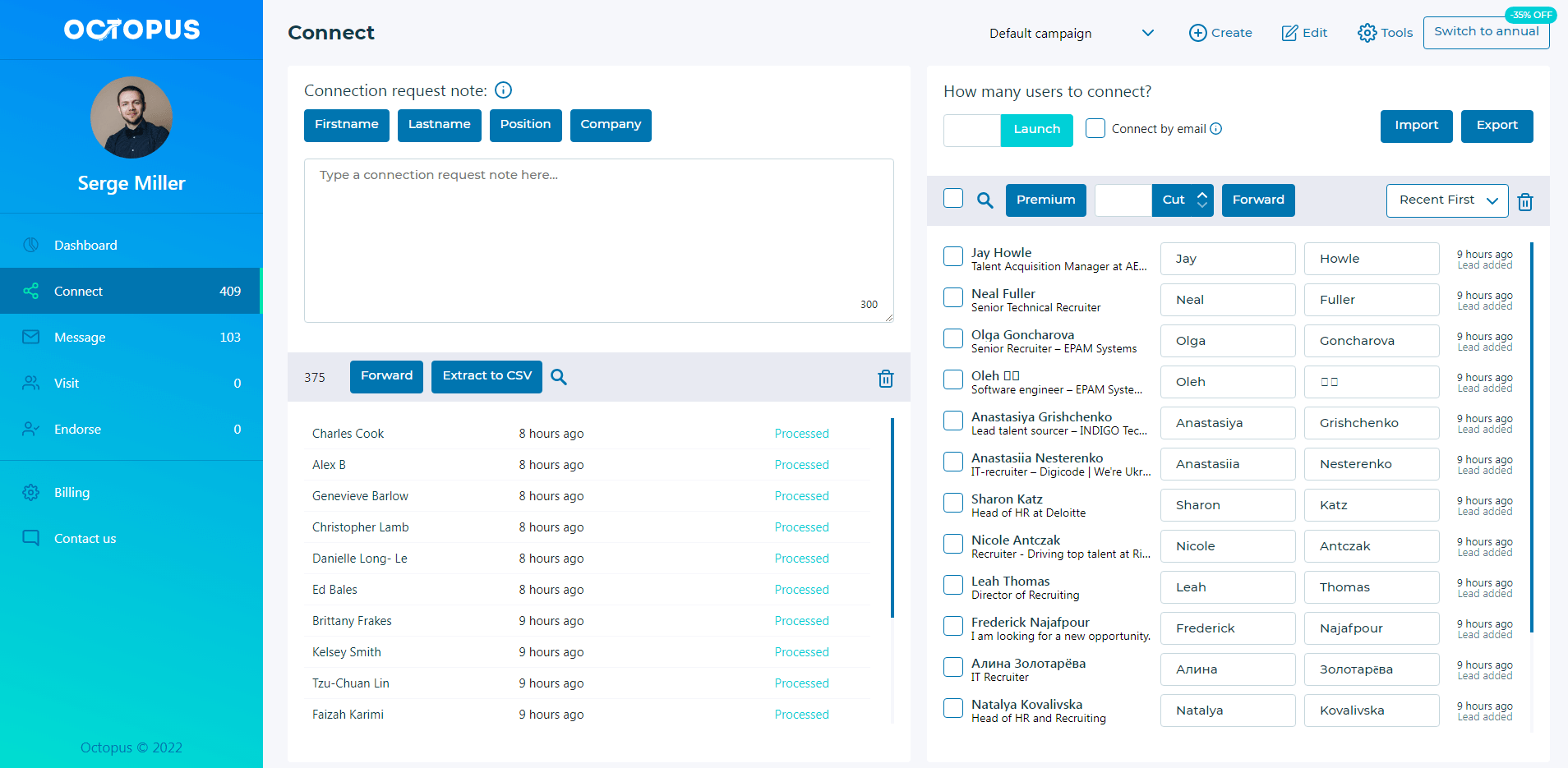
It’s no secret that LinkedIn is every B2B marketer’s favorite platform to build brand awareness and recognition. But not everyone knows that Octopus CRM is the ideal tool to master this business-oriented social network.
Octopus CRM is an all-in-one LinkedIn automation tool that helps marketers and advertisers improve their prospecting and lead generation efforts. This powerful and effective automation platform enables you to send highly personalized and attention-grabbing InMail and connection requests to your audience.
The best part? It makes it easy to track your performance by providing a detailed assessment of your campaigns. As a result, you can tweak your email campaigns, direct emails, and InMails to draw in more viewers.
VoiceSpin

While not so obvious, contact center solutions can also be efficiently used for automating your outbound marketing efforts. VoiceSpin is a great example of what an omnichannel outbound call center software platform is capable of in terms of optimizing and streamlining your sales and marketing outreach.
The tool enables your agents to effectively manage outbound calling campaigns by using an AI-powered predictive dialer that is able to connect your leads to the most appropriate sales agents based on an intelligent lead and agent scoring system, which can significantly improve your sales conversions.
In addition, VoiceSpin’s business text messaging capabilities allow you to send automated bulk SMS campaigns customized to specific audiences directly from your CRM and boost your sales engagement. That is an excellent way to warm up and re-engage your existing leads and drive more sales conversions while optimizing your operational expenses since bulk SMS is one of the most cost-efficient marketing automation tools.
InsideSales
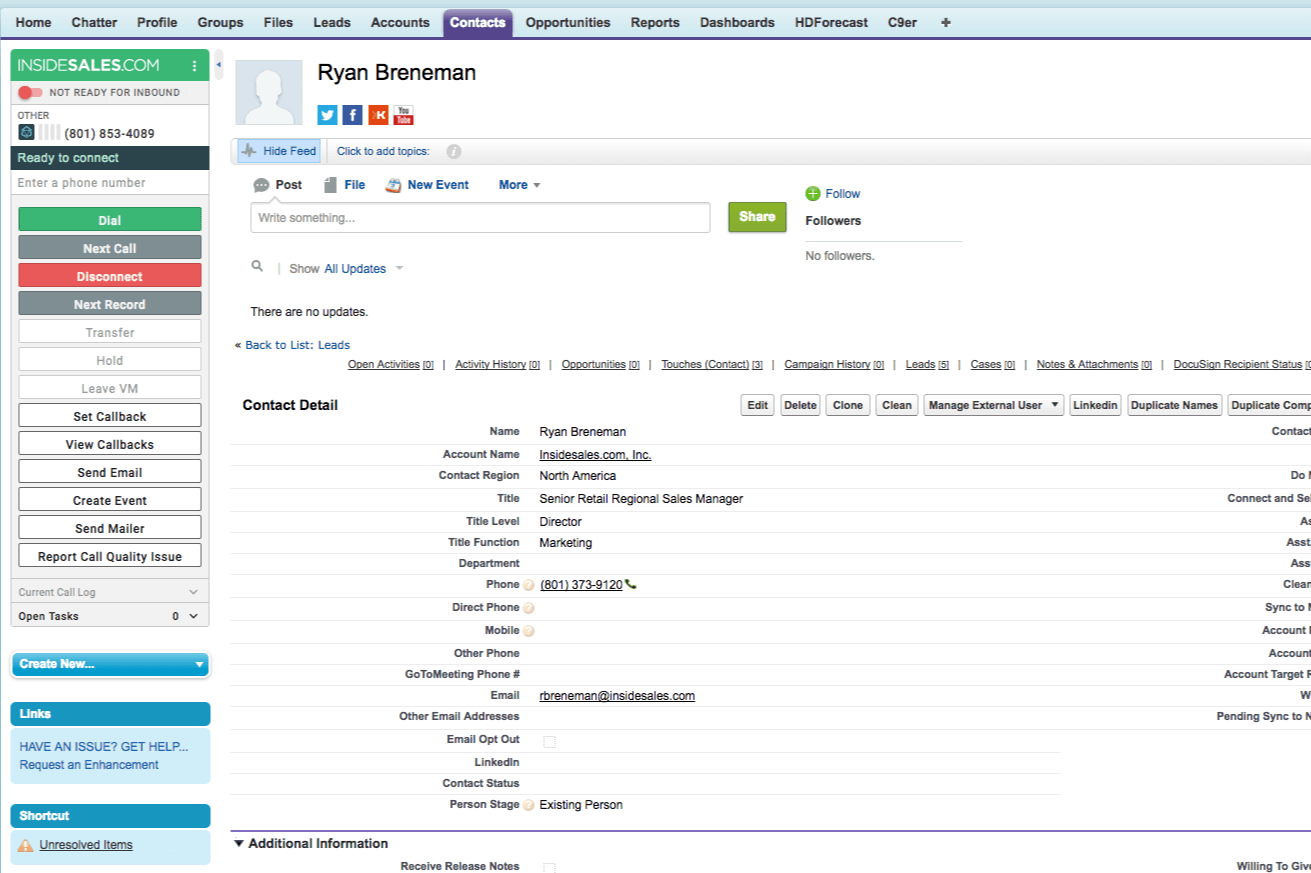
InsideSales is a revolutionary sales engagement platform boasting predictive analytics, data visualization, communication, and gamification features.
It also enables you to encourage your sales staff, take advantage of valuable data to reach out to prospects, and anticipate which leads will contact and qualify. The best part? It helps you create meaningful conversations with opportunities to drive revenue.
Woodpecker
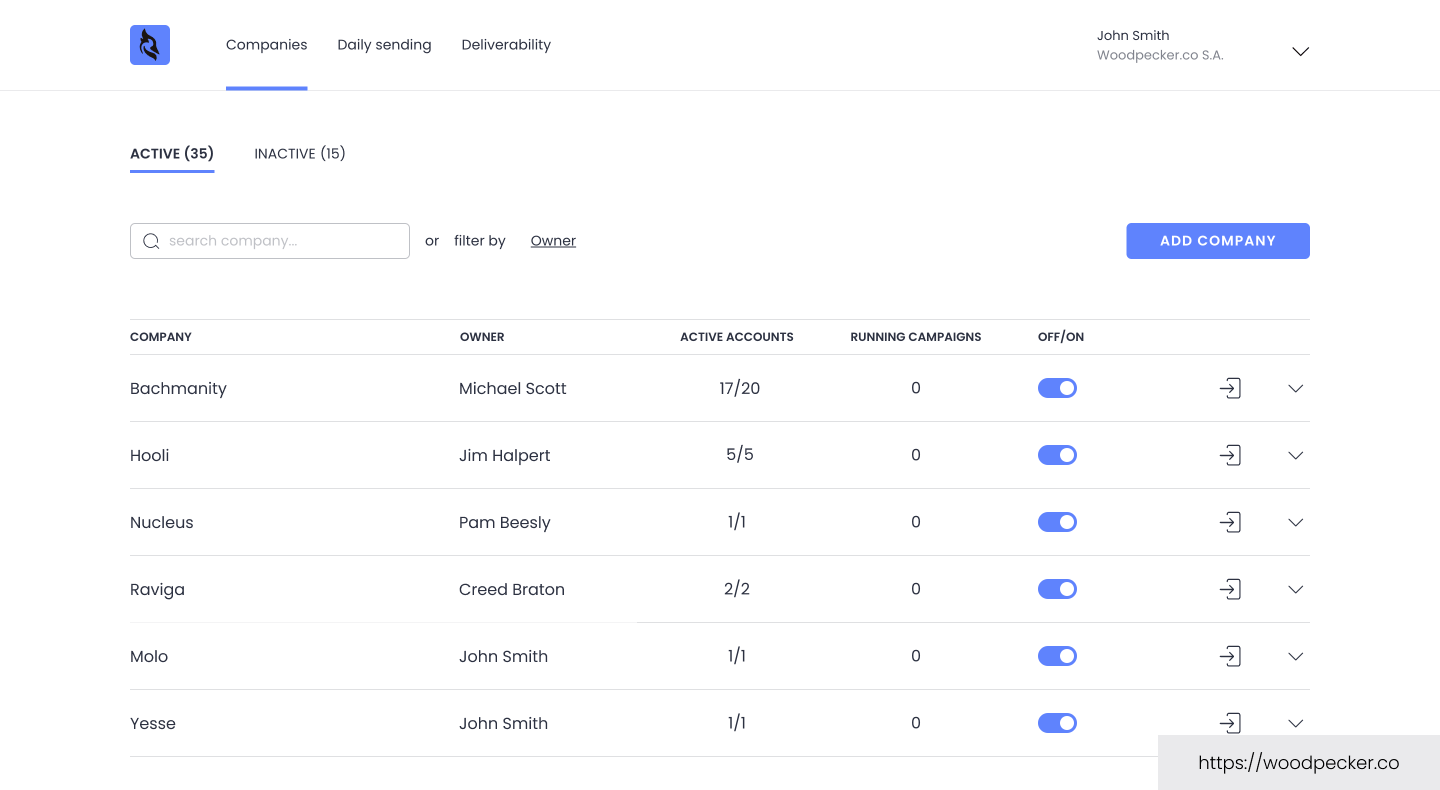
Woodpecker is another fantastic platform that helps you run effective cold email campaigns to convert viewers into profit-generating customers.
Its innovative automated functions allow you to use generated lists and monitor your campaigns to improve performance and scale your business.
Hunter
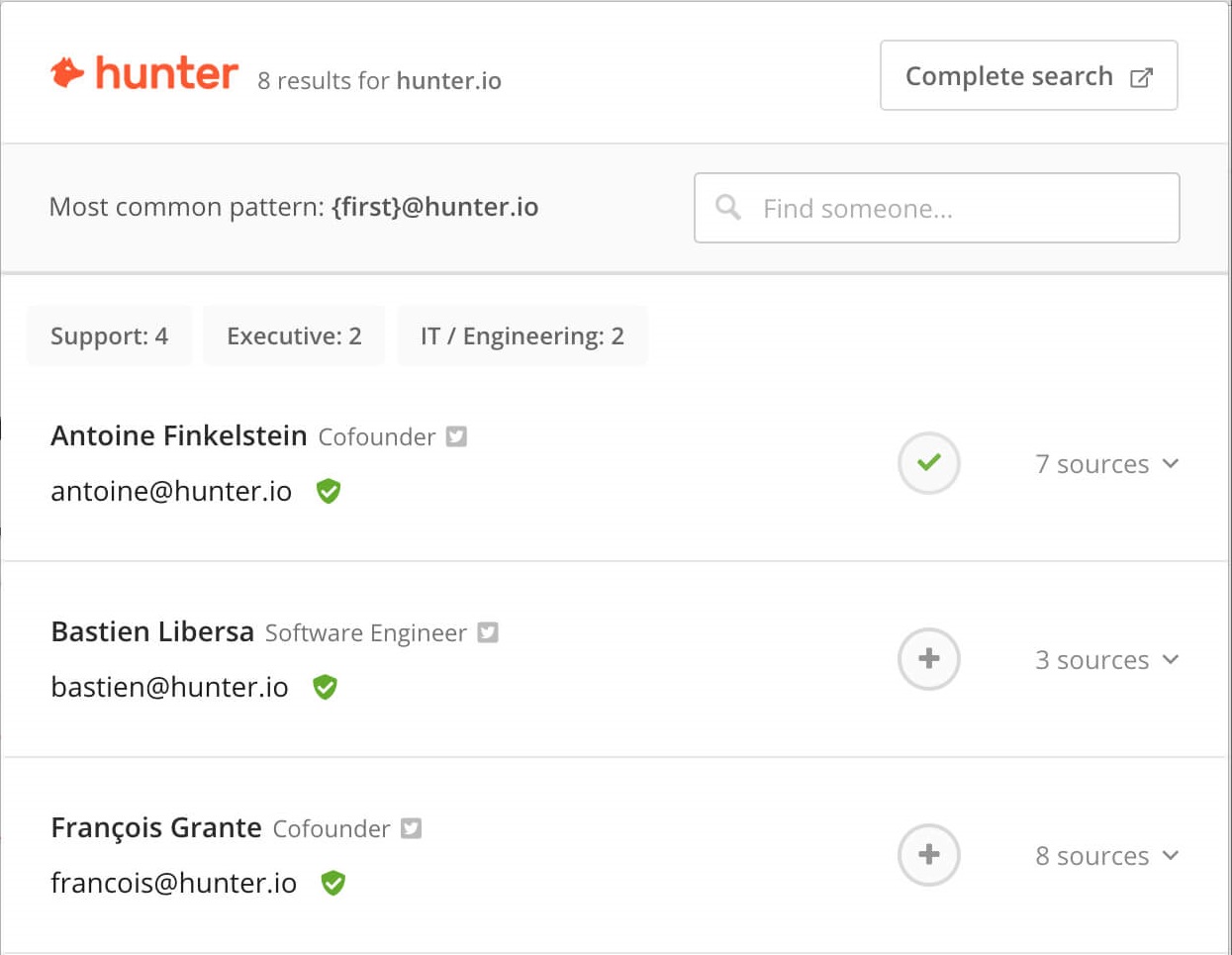
Hunter is ideal for salespeople wanting to scrape information about their potential customers.
The robust platform provides in-depth data, such as company names, specific people, or email addresses. As a result, Hunter helps you personalize your outbound marketing efforts, thus ensuring effectiveness and success.
Additionally, the tool allows you to check the validity of email addresses and use third-party integrations.
Is Outbound Marketing Still Relevant Today?
Contrary to popular belief, outbound marketing is not dead. Instead, it’s the opposite!
Most businesses and lead generation agencies use outbound marketing to build brand awareness, acquire qualified leads, and achieve a good ROI. Not convinced? Here are four ways outbound marketing showcases its relevance:
- It Helps Create the First Contact with Prospects – Outbound marketing helps you warm up to a potential customer, thus allowing you to foster organic relationships;
- Enables You to Unlock the Hidden Power of Personalization – Many salespeople seek personal contacts by conducting face-to-face meetings and trade shows. Outbound marketing lays the groundwork for these meetings;
- Growth of Channel and Device Choices – In today’s digital era, outbound marketing is no longer limited to traditional channels. Instead, it uses social media channels, PPC, and email to ensure maximum efficiency.
Moving from Outbound Marketing to Inbound
While outbound marketing is 100% necessary, there are times when it’s not practical.
So, instead of using outbound marketing tactics to the people trying to ignore you, consider leveraging inbound marketing. As a result, your brand and products/services become visible to already engaged people.
To do this, you must master Google’s algorithm and create your website like a “hub” for the industry. Remember, your goal in inbound marketing is to captivate customers through social media, search engines, and content.
Conclusion
Hopefully, by now, you know what outbound marketing is, the top strategies, and its benefits and challenges. The key to boosting brand awareness and growing sales is taking advantage of the proper outbound marketing channels and techniques.
Use the above tips and align them with your inbound marketing strategy to scale your business.
